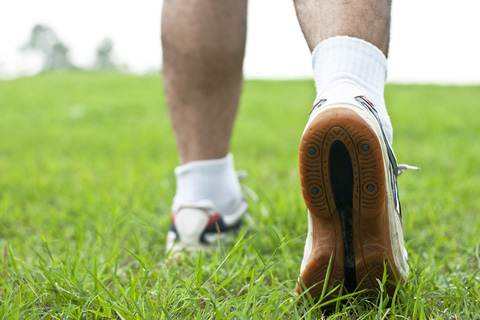5 Natural Remedies for Athlete’s Foot: Good Hygiene, Tea Tree Oil, Garlic, and More
 Itchy feet, flaky skin, and swelling: Having athlete’s foot is no fun, and it can be really difficult to get rid of. But these simple, easy, and effective natural remedies for athlete’s foot will help you get rid of bothersome and uncomfortable symptoms.
Itchy feet, flaky skin, and swelling: Having athlete’s foot is no fun, and it can be really difficult to get rid of. But these simple, easy, and effective natural remedies for athlete’s foot will help you get rid of bothersome and uncomfortable symptoms.
What is athlete’s foot?
Athlete’s foot, medically known as tinea pedis, is caused by a fungal infection on the feet, which generally begins between the toes. Symptoms include burning, itching, swelling, rashes, peeling, and pain in the toes and feet.
Because fungi grow best in warm, moist places, this condition commonly occurs in people who wear damp socks and tight fitting shoes (hence the name athlete’s foot). Athlete’s foot is contagious and can spread through sharing clothing, towels, or through contact with someone else who has it.
How to take care of your feet
To properly treat your symptoms and prevent recurrence, good hygienic practices are necessary.
- Keep your feet dry. After showing, be sure to dry between your toes. If your feet become wet or sweaty throughout the day, let them air out or towel dry them.
- Use clean socks. Change your socks often, especially if your feet tend to be sweaty.
- Wear shoes with good ventilation. When you can, wear light, loose, airy shoes that let your feet breathe. Make sure you let your shoes dry out before wearing them again.
- Protect your feet from exposure. When using communal showers, be sure to wear waterproof sandals. Don’t share shoes or socks with others.
- Don’t scratch or pick at your feet. Doing so can exacerbate your symptoms and increase the risk of spreading the infection to other parts of your body.
5 herbs to use as natural remedies for athlete’s foot
Conventional treatment of athlete’s foot involves over-the-counter medications that eradicate the fungal infection that is causing your symptoms. Instead, try these herbal treatments that have natural anti-fungal qualities, allowing you to get rid of your infection without medication.
- Tea tree oil. This essential oil has antimicrobial and antifungal properties (due to its content of terpenes) and is very effective in fighting the infection causing athlete’s foot. In one study, a topical application of 25% tea tree oil cream was found to significantly improve symptoms better than placebo, and it was well tolerated.[1]
- Garlic is a popular home remedy for a variety of conditions. It is a strong antifungal agent, making it effective against athlete’s foot infections.[2] Ajoene, an extract from garlic, has specifically been shown to be a very effective topical treatment for athlete’s foot.[3] Try mixing fresh, crushed garlic with coconut oil and rubbing it on the affected area, or adding it to a foot bath.
- Coriander oil is another natural antifungal agent. In one study, after 28 days of topical application of coriander oil or placebo to the infection site, those participants using coriander oil had significantly lower signs of infection. Both participants and physicians perceived the effectiveness of the treatment as rather good.[4] Try rubbing coriander essential oil on your toes and feet.
- Ozonized sunflower oil is produced by the reaction between ozone and sunflower oil, which produces certain compounds with medicinal properties. In one study, topical application of ozonized sunflower oil (Oleozon®) twice per day for six weeks resulted in improvements in athlete’s foot; lack of relapse of symptoms for a six month follow-up period indicated that it is effective at preventing the infection from coming back, as well.[5]
- Oregano oil has a wide variety of medicinal properties. One use of oregano oil is in inhibiting fungal infections, making it a good choice for managing athlete’s foot.
Originally published in 2015, this post has been updated.
[1] Australas J Dermatol. 2002 Aug;43(3):175-8.
[2] Avicenna J Phytomed. 2014 Jan;4(1):1-14.
[3] J Am Acad Dermatol. 2000 Nov;43(5 Pt 1):829-32.


 Ask the EN Experts March 2025
Ask the EN Experts March 2025  Vegan Diet Better Than Omnivore Diet for Cardiovascular Health
Vegan Diet Better Than Omnivore Diet for Cardiovascular Health 